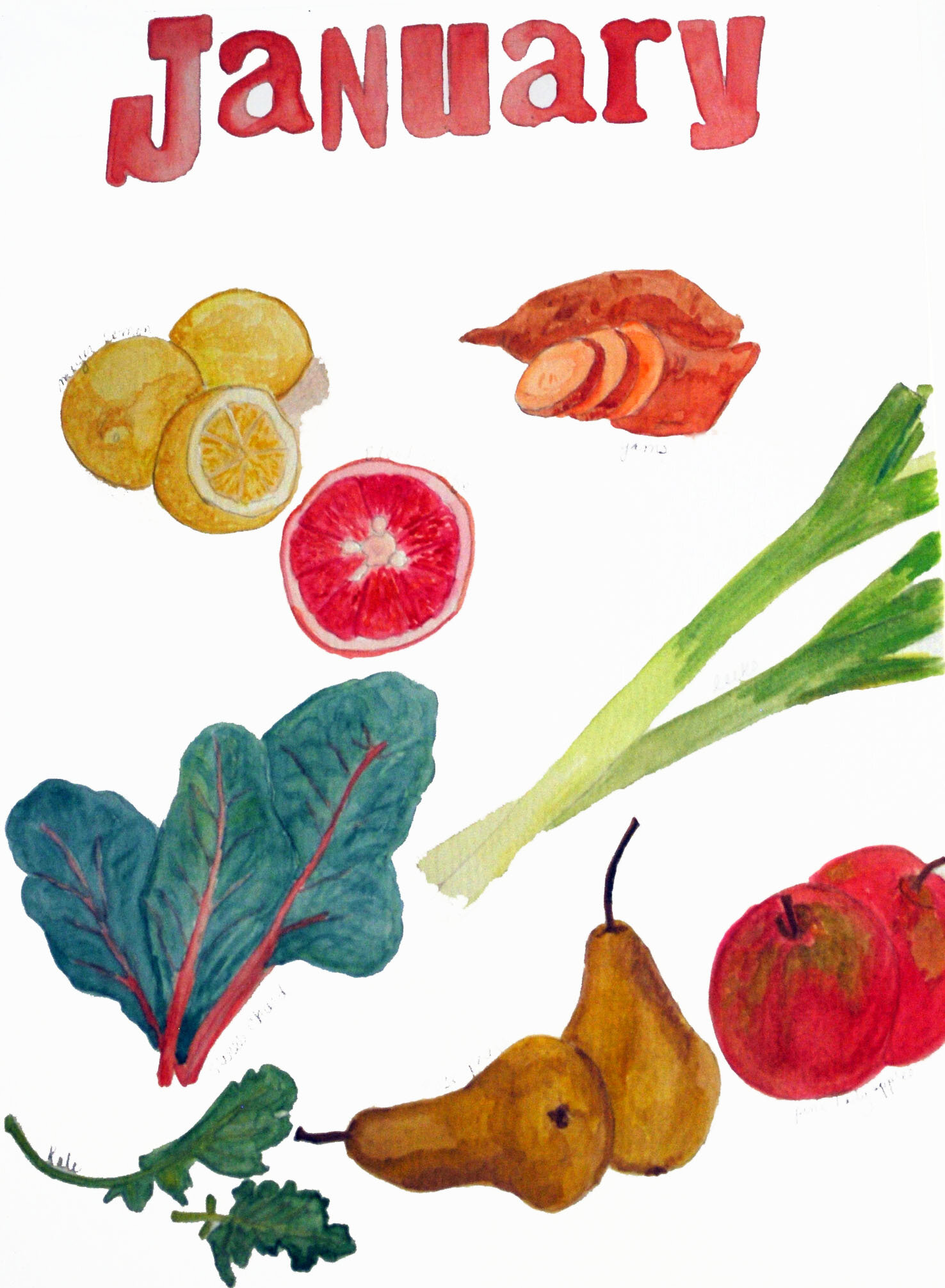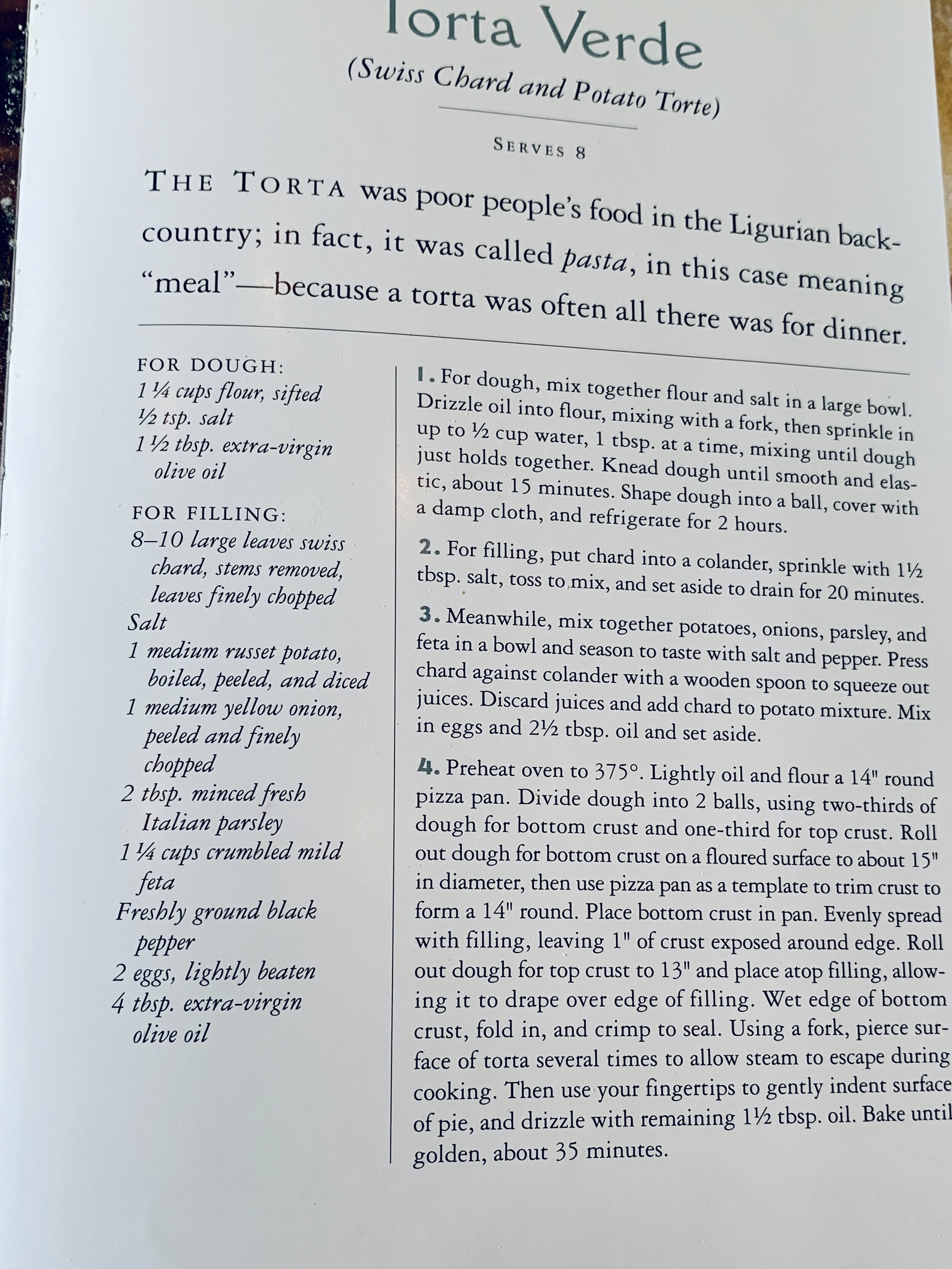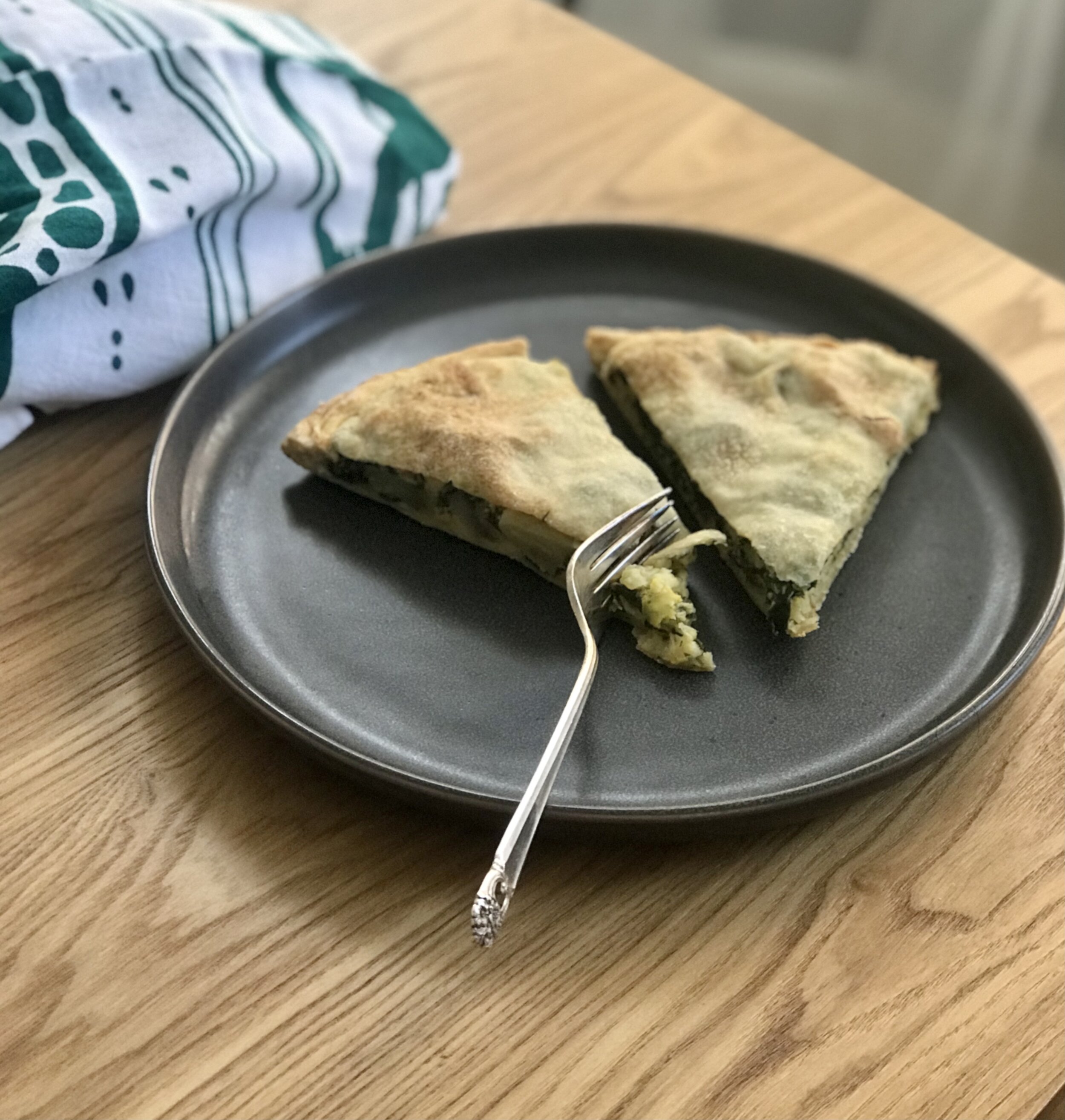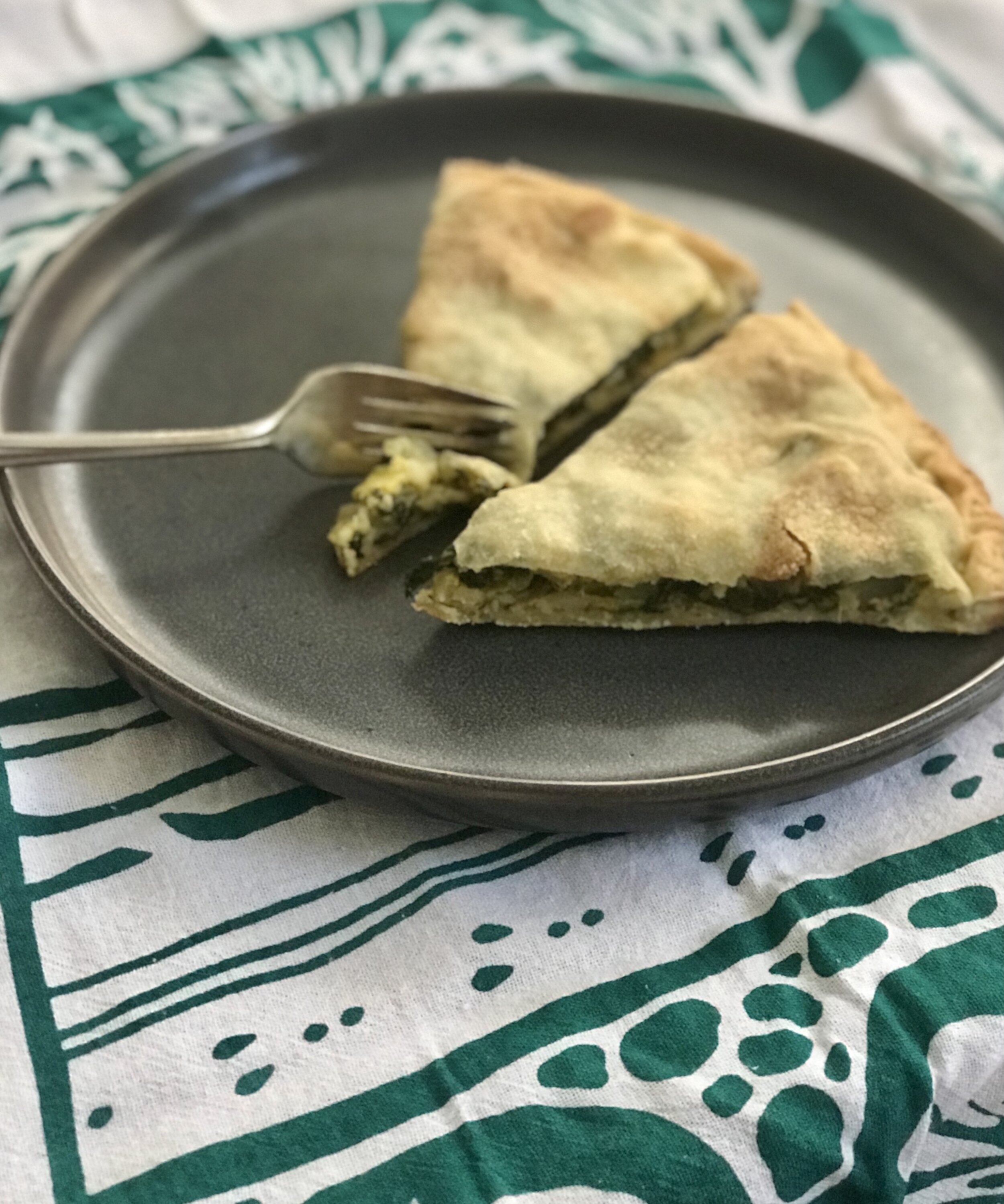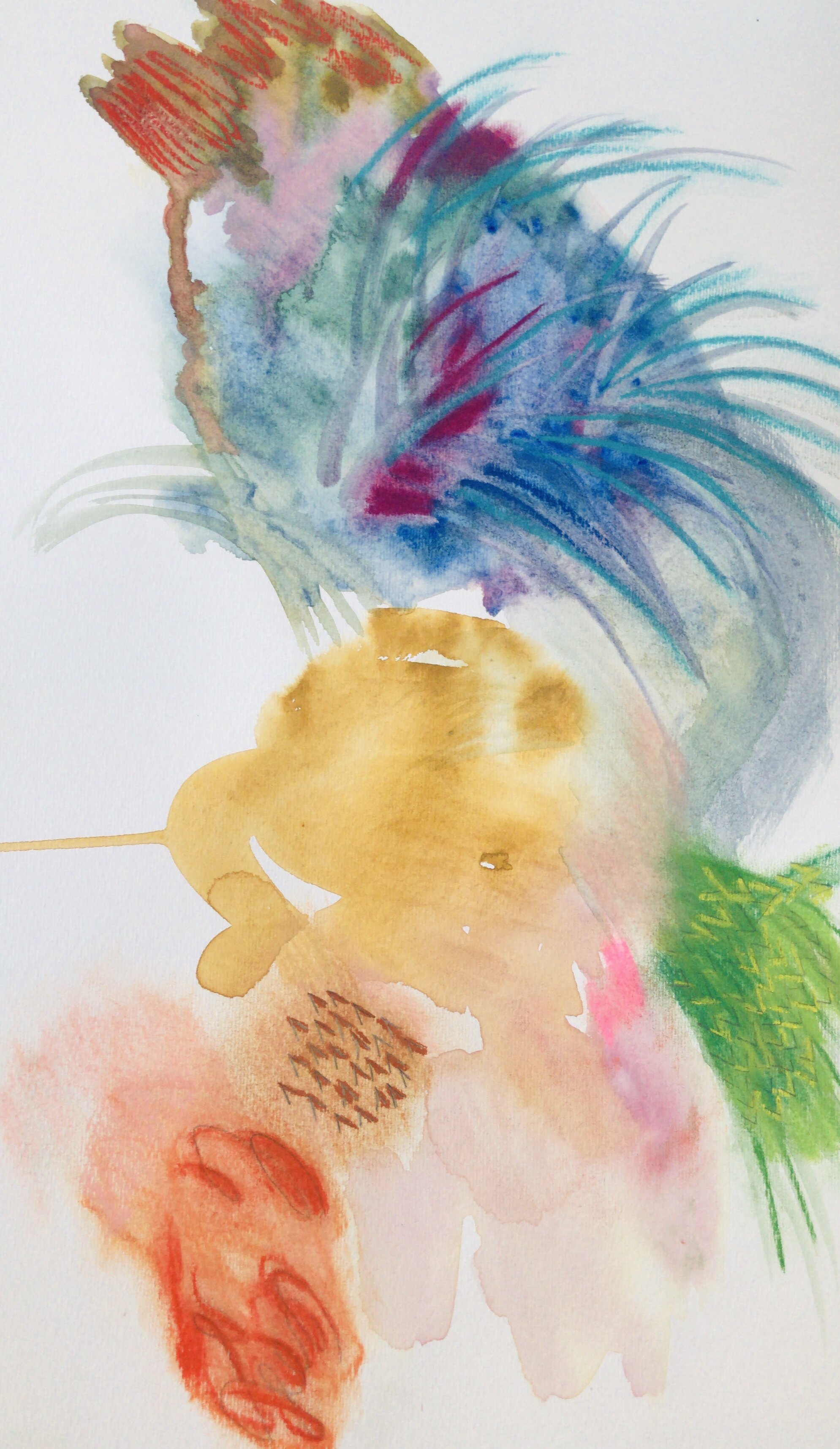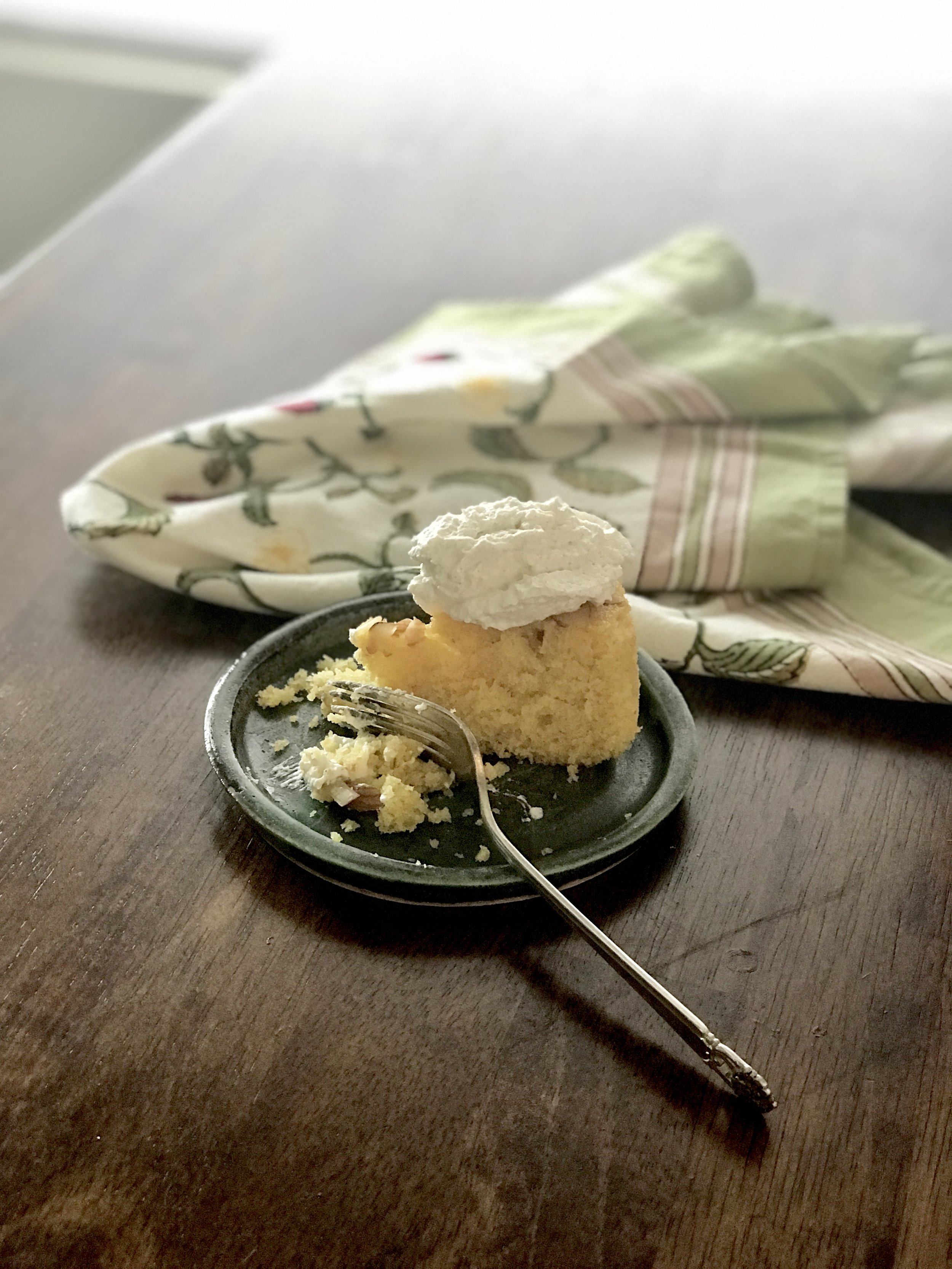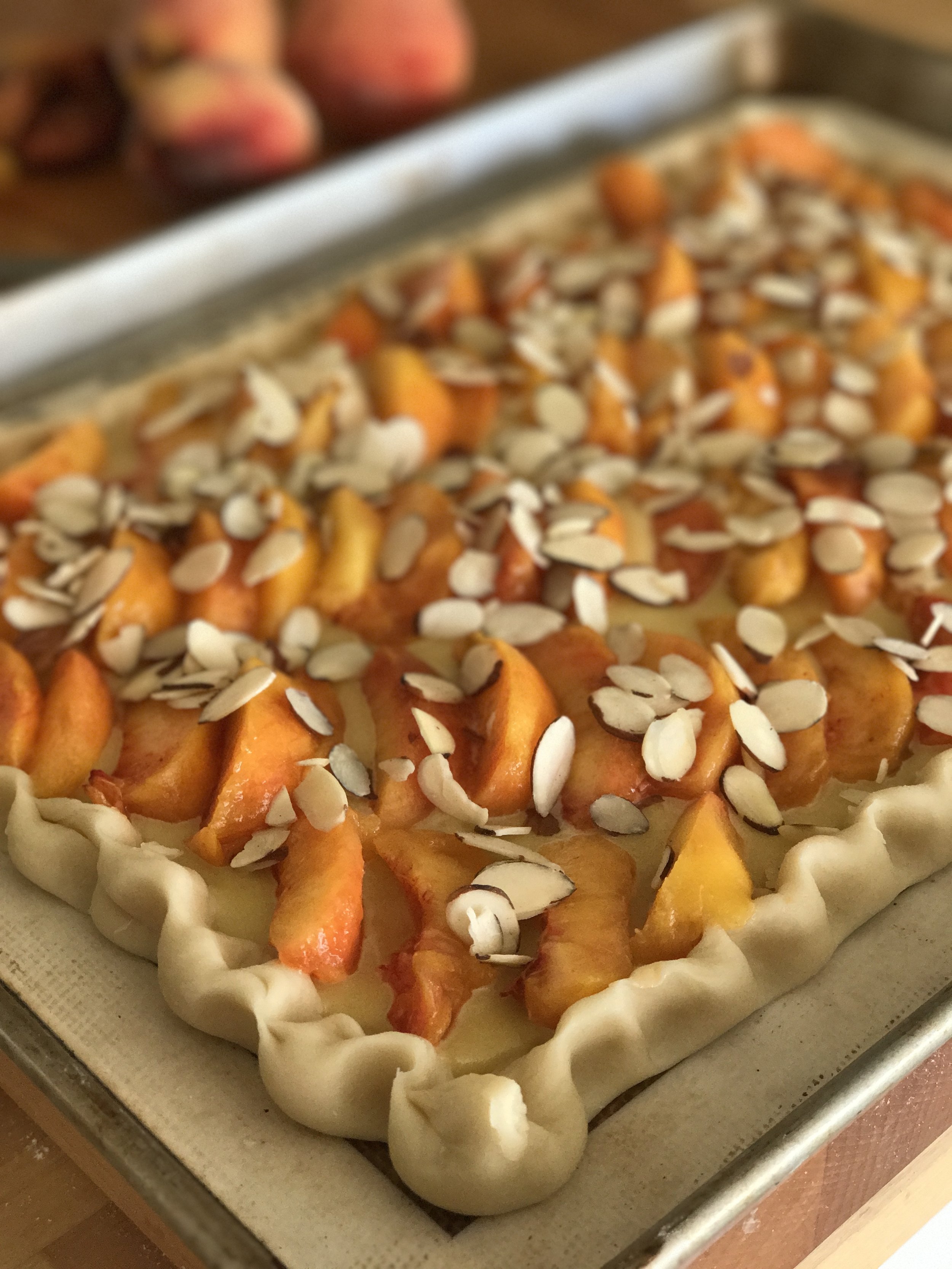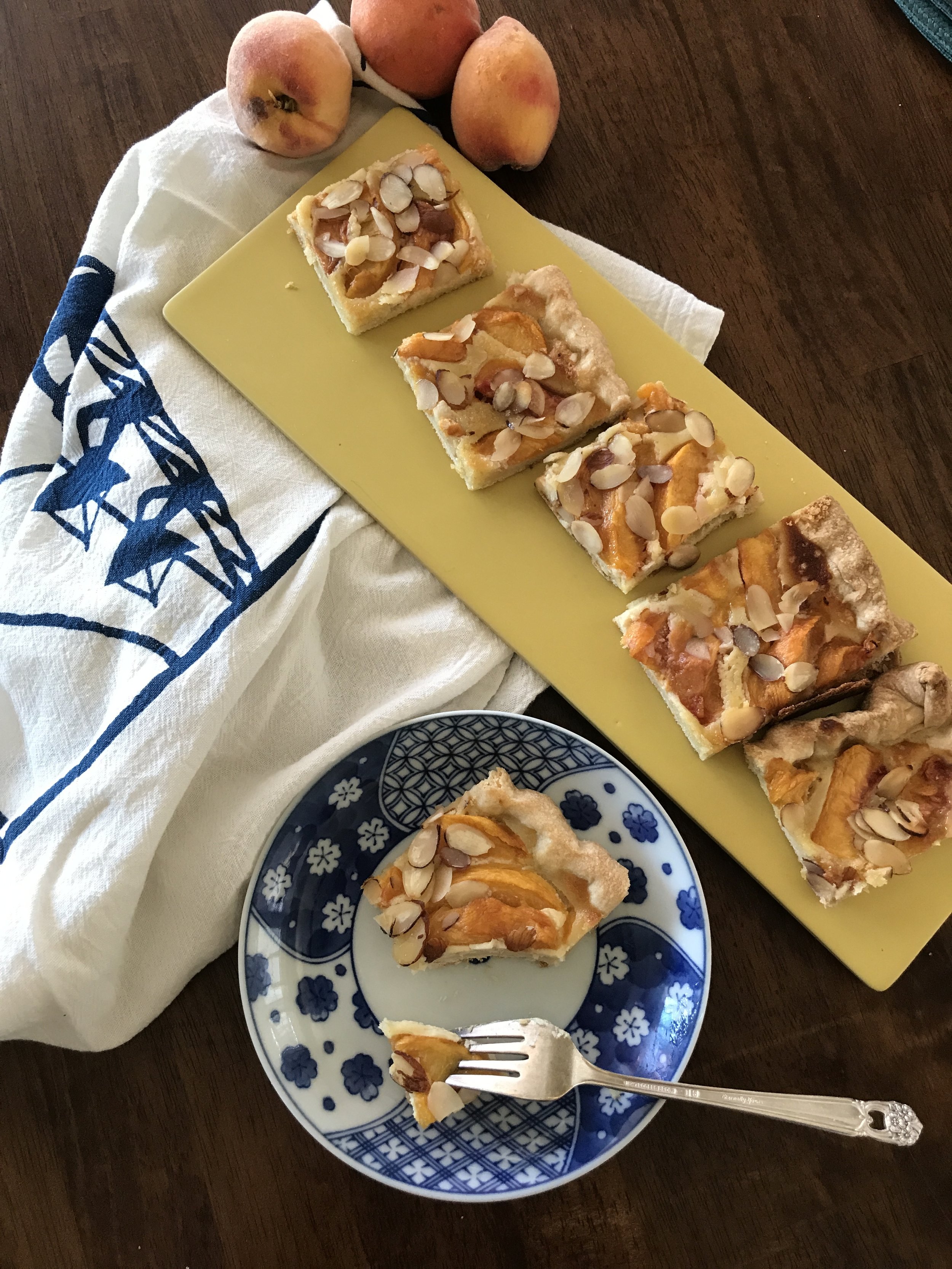Bosc (BAHsk) Drawn above have a curved stem and elongated neck that widens gradually to a full rounded base creates that is unique among pears. Bosc colors look like warm cinnamon brown with deep rusts on the surface of the skin. Many artists use these type of pears in their still life paintings, which is probably why I was drawn to including it in this months watercolor.
Bosc pears have a more firm and are ideal for use in baking, broiling or poaching. I found their consistency dense but flavor very sweet.
It remains a matter of contention whether Bosc are of Belgium or French origin. Bosc Pears were discovered sometime in the early 1800's. Some refer to them as Beurré Bosc which means "buttery" and named after M. Bosc who was the director of the Paris Botanical Garden.
In the United States the variety was first planted in 1832 or 1833, and those trees first bore fruit in 1836. The first plantings were done in the eastern U.S., on large estate orchards and later commercial orchards. Bosc are grown largely in the Northwest, these trees seem to thrive best in the soil and climate of the Pacific Northwest states of Oregon and Washington. (source USpears.org)
Bartlett ( BART-let) carries a true "pear shape:" a rounded bell on the bottom half of the fruit. Bartlett’s often found in local grocery stores are green, they change to yellow as they ripen at home when left at room temperature.
Sliced Bartlett on top of a green salad with your favorite dressing or freshly sliced wedges with cheese for an appetizing snack. Any recipe calling for apples can be made using fresh pears. I found these much softer than the bosc pear and more of a champagne taste.
The variety of pears were discovered originally in 1765 by a schoolmaster in England named Mr. Stair, the Bartlett was first referred to as Stair's Pear. A nurseryman named Williams later acquired the variety, and after introducing it to the rest of England, the pear became known as the Williams Pear. Around 1799, Mr. James Carter imported several Williams trees to the United States, and they were planted on the grounds of Thomas Brewer in Roxbury, Massachusetts. Later, Enoch Bartlett of Dorchester, Massachusetts acquired the Brewer estate. Not knowing the identity of the trees, Bartlett propagated and introduced the variety to the United States under his own name. It was not until 1828, when new trees arrived from Europe, that it was realized that Bartlett and Williams pears were one in the same. By then it was too late... the variety had become widely popular in the U.S. under its adopted name: the Bartlett. (source USpears.org)
D’Anjou (ON-ju) D’Anjou, also know as d'Anjou pears are thought to have originated in Belgium, and they are named after the Anjou region in France. The variety was introduced to England early in the 19th century. Called Beurré d' Anjou, they were introduced to America in about 1842. They are recognizable for their egg-shaped appearance, having a larger spherical lower portion that begins a gradual taper above the mid-point to a narrower rounded top. Their skin color is bright green, and sometimes has a soft red blush.
The Anjou is an all-purpose pear. They are juicy when ripe, with a hint of lemon-lime flavor. They hold up well in baking, poaching, roasting, or grilling and they are delicious when sliced fresh in salads or eaten as a snack. This pear was sweet with almost an apple taste to them
Red D’Anjou (ON-ju) Recognizable for their egg-shaped appearance, having a larger round lower portion that taper above the mid-point to a narrower rounded top, like an egg. The color of Red Anjous varies from pear to pear, however, they are generally dark maroon in color, sometimes with light vertical streaks of color that were naturally created by the sun while the pear was still on the tree. The red D’Anjou was more grainy in texture then the green version.


